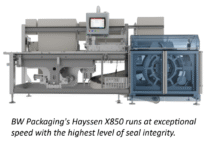
In Europe, measures taken over the past two months for slowing down the Covid-19 pandemic have already put much of the printing industry in peril. According to a survey conducted by the German graphic industry federation BVDM, among its members in the last week of April, 94% of Germany’s printers were confronted with a Covid-related decline in print orders, 75% even severely. For one-third of all printing houses, second-quarter sales turnover is falling by 50%, for more than another third of the printer’s, sales turnover is decreasing by 25 to 50%. Over the past two months, 40% of printing enterprises had to deal with absenteeism because of staff in hospitals, quarantine, or babysitting. 58% of the enterprises experienced raw material shortages, more than 10% of these severely.
Around 20% of the printers surveyed, expect to be able to survive until the end of June if conditions don’t change, 24% believe themselves able to cope until the end of July, while another 28% expect to be able to cope till the end of the year. The BVDM fears that by the end of the summer, about half of the printing houses in Germany could go bankrupt if bailout and emergency measures by the government are not stepped up.
Fifty graphic enterprises shut down completely
So far, government support consists of a break on credits and taxes, various credit lines, and subsidies for short-time working. 75% of all printing enterprises have opted for short-time working, 80% have cut back accumulated overtime, 70% have reduced production, 4% have closed down certain business units, 60% of staff is working from home, and 9% of staff has been laid-off so far. Some fifty enterprises had to shut down their premises completely because of Covid-related government measures.
In order to survive and cut costs, most printing houses, 72%, decided to postpone investments. 45% of the surveyed printers decided to skip investments altogether. 43% are reducing staff. 35% are opting for strategic alliances, 31% for supply chain optimization, 30% for price adjustments, 20% for increased automation, and 9% for the closure of business units. The printing industries in the 27 member states of the European Union are increasingly serving customers across the EU’s internal borders, and in many of the Western European countries hit by the Covid-19 pandemic, the situation is similar to that of the German graphic industry.











